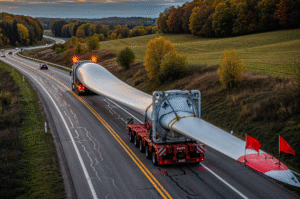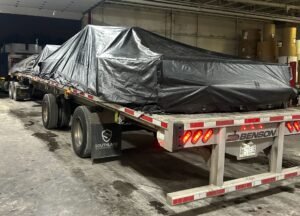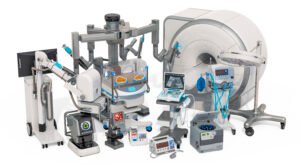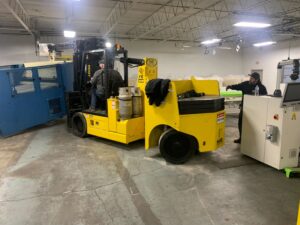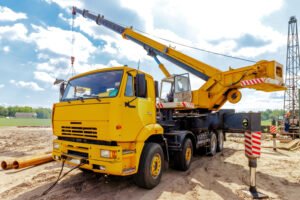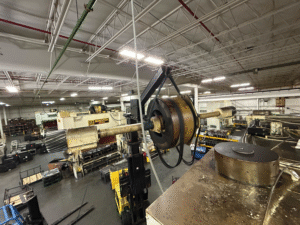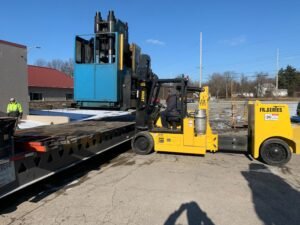Industrial relocation is a complex and multifaceted process that involves the transfer of entire facilities, including machinery, infrastructure, and workforce, to a new location. One of the most critical aspects of this process is the safe and efficient movement of heavy equipment. Whether relocating a manufacturing plant, a warehouse, or a processing facility, the role of heavy equipment moving is pivotal in ensuring a smooth and successful transition. This article delves into the various aspects of heavy equipment moving in industrial relocation, exploring its importance, challenges, methodologies, and best practices.
Introduction to Industrial Relocation
Understanding Industrial Relocation
Industrial relocation refers to the process of moving an entire industrial facility, including its equipment, personnel, and operations, from one location to another. This may be driven by several factors, including the need for expansion, access to new markets, cost reduction, or regulatory compliance. Regardless of the reason, the relocation process requires meticulous planning, coordination, and execution to minimize downtime, ensure safety, and maintain operational continuity.
The Importance of Heavy Equipment in Industrial Operations
Heavy equipment forms the backbone of industrial operations, facilitating various tasks such as manufacturing, processing, assembly, and logistics. This equipment includes machinery, tools, and vehicles that are often large, heavy, and complex. Their proper functioning is crucial for maintaining productivity, and any damage or malfunction during relocation can have significant financial and operational repercussions.
The Significance of Heavy Equipment Moving in Industrial Relocation
Ensuring Operational Continuity
One of the primary objectives of industrial relocation is to ensure that the relocated facility can resume operations as quickly as possible. Heavy equipment moving plays a crucial role in this by enabling the safe and efficient transfer of machinery and tools to the new location. Proper handling and transportation of heavy equipment help prevent damage, ensuring that the equipment remains operational and minimizing downtime.
Minimizing Risks and Ensuring Safety
Heavy equipment moving involves the transportation of large and often hazardous machinery, which poses significant risks to both the equipment and personnel involved. Professional heavy equipment movers are trained to handle these risks through proper planning, the use of specialized tools and vehicles, and adherence to safety protocols. This minimizes the likelihood of accidents, equipment damage, and injuries during the relocation process.
Cost Efficiency and Resource Optimization
While industrial relocation can be a costly endeavor, efficient heavy equipment moving can help control costs by minimizing equipment downtime, reducing the risk of damage, and optimizing resource utilization. Professional movers use their expertise to plan the most efficient routes, select the appropriate transportation methods, and ensure that the equipment is handled with care, ultimately saving time and money.
Challenges in Heavy Equipment Moving During Industrial Relocation
Size and Weight Constraints
One of the most significant challenges in heavy equipment moving is the size and weight of the machinery. Many pieces of industrial equipment are massive, requiring specialized vehicles and handling equipment for transportation. These constraints necessitate careful planning and coordination to ensure that the equipment can be moved safely and efficiently, often involving the use of cranes, heavy-duty trailers, and other specialized tools.
Permitting and Regulatory Compliance
Transporting heavy equipment often requires navigating a complex web of regulations and permits, especially when moving across state or national borders. These regulations may include restrictions on load size and weight, route limitations, and safety requirements. Failure to comply with these regulations can result in delays, fines, and other complications, making it essential to work with experienced professionals who understand the legal requirements of heavy equipment moving.
Handling Fragile and Specialized Equipment
Not all heavy equipment is built the same; some machines are delicate and require specialized handling to prevent damage. For example, precision instruments, electronics, and sensitive machinery may need to be carefully packaged, cushioned, and secured to avoid damage during transport. This adds another layer of complexity to the heavy equipment moving process, requiring expertise in handling specialized equipment.
Logistical Coordination
Industrial relocation involves the coordination of multiple moving parts, including personnel, equipment, transportation, and timelines. Heavy equipment moving is a critical component of this logistical puzzle, requiring precise scheduling, route planning, and communication. Any delays or missteps in the moving process can have a cascading effect on the entire relocation, leading to increased costs and extended downtime.
Methodologies in Heavy Equipment Moving
Pre-Move Planning and Assessment
The first step in any successful heavy equipment moving operation is thorough planning and assessment. This involves evaluating the equipment to be moved, identifying potential challenges, and developing a detailed relocation plan. Key considerations include the size and weight of the equipment, the distance to be covered, the type of transportation required, and any regulatory or permitting requirements.
Equipment Dismantling and Preparation
In many cases, heavy equipment may need to be dismantled or partially disassembled to facilitate safe and efficient transport. This process involves removing detachable components, securing loose parts, and ensuring that the equipment is properly stabilized for transport. Proper labeling and documentation are also essential to ensure that the equipment can be reassembled correctly at the new location.
Selecting the Right Transportation Methods
The choice of transportation method is a critical factor in heavy equipment moving. Depending on the size, weight, and nature of the equipment, different types of vehicles and handling tools may be required. For example, flatbed trailers, lowboy trailers, and heavy-duty cranes may be used to transport large and heavy machinery. In some cases, specialized vehicles with air-ride suspension or hydraulic lift systems may be needed to protect sensitive equipment during transport.
Loading, Securing, and Transporting Equipment
Once the equipment has been prepared for transport, the next step is to load it onto the selected vehicle and secure it for safe transit. This involves the use of chains, straps, and other securing devices to prevent movement during transport. Proper weight distribution and load balancing are also essential to ensure stability and prevent accidents. The transportation process itself requires careful route planning, with considerations for road conditions, traffic, and any obstacles that may be encountered along the way.
Reassembly and Installation at the New Location
Upon arrival at the new location, the heavy equipment must be carefully unloaded, reassembled, and installed according to the relocation plan. This process may involve the use of cranes, forklifts, and other lifting equipment to position the machinery accurately. Proper alignment, calibration, and testing are also necessary to ensure that the equipment is fully operational and ready for use in the new facility.
Best Practices in Heavy Equipment Moving
Working with Experienced Professionals
Given the complexity and risks associated with heavy equipment moving, it is essential to work with experienced professionals who have the expertise and resources to handle the job. This includes selecting a reputable moving company with a proven track record in industrial relocation, as well as ensuring that the team is trained, certified, and equipped with the necessary tools and equipment.
Conducting a Risk Assessment
Before moving any heavy equipment, it is crucial to conduct a comprehensive risk assessment to identify potential hazards and develop mitigation strategies. This includes evaluating the equipment, transportation routes, and handling procedures to ensure that all risks are addressed and managed effectively.
Developing a Contingency Plan
Even with the best planning and preparation, unforeseen challenges can arise during heavy equipment moving. Developing a contingency plan is essential to address potential issues such as equipment breakdowns, delays, or regulatory hurdles. This plan should include alternative transportation routes, backup equipment, and emergency response protocols to minimize disruptions and ensure a successful relocation.
Prioritizing Safety at All Stages
Safety should be the top priority at every stage of the heavy equipment moving process. This includes providing proper training and protective gear for all personnel involved, adhering to safety protocols and regulations, and conducting regular safety inspections throughout the relocation. Ensuring that all equipment is handled and transported safely not only protects the equipment itself but also prevents accidents and injuries.
Effective Communication and Coordination
Successful heavy equipment moving requires seamless communication and coordination among all parties involved, including the relocation team, the equipment movers, and the receiving facility. This involves regular updates, clear instructions, and open lines of communication to ensure that everyone is on the same page and that any issues can be addressed promptly.
The Future of Heavy Equipment Moving in Industrial Relocation
Technological Advancements
The future of heavy equipment moving in industrial relocation is likely to be shaped by technological advancements that enhance efficiency, safety, and precision. Innovations such as autonomous vehicles, advanced robotics, and real-time monitoring systems are expected to play a significant role in streamlining the moving process and reducing the risk of human error.
Sustainability and Environmental Considerations
As industries increasingly focus on sustainability and environmental responsibility, heavy equipment moving will need to adapt to meet these demands. This may involve the use of eco-friendly transportation methods, reducing carbon emissions, and minimizing the environmental impact of relocation activities. Additionally, companies may seek to optimize equipment reuse and recycling during the relocation process.
The Role of Data and Analytics
Data and analytics are expected to play an increasingly important role in heavy equipment moving, enabling companies to make informed decisions and optimize their relocation strategies. By leveraging data on equipment performance, transportation routes, and operational costs, companies can identify opportunities for improvement and enhance the efficiency of their relocation efforts.
Conclusion
Heavy equipment moving is a critical component of industrial relocation, playing a vital role in ensuring operational continuity, minimizing risks, and optimizing costs. The complexity and challenges associated with moving large and heavy machinery require careful planning, expertise, and the use of specialized tools and vehicles. By following best practices, working with experienced professionals, and embracing technological advancements, companies can successfully navigate the intricacies of heavy equipment moving and achieve a smooth and successful industrial relocation. As the industry continues to evolve, the future of heavy equipment moving promises to be even more efficient, sustainable, and technologically advanced, further enhancing the success of industrial relocation projects.

